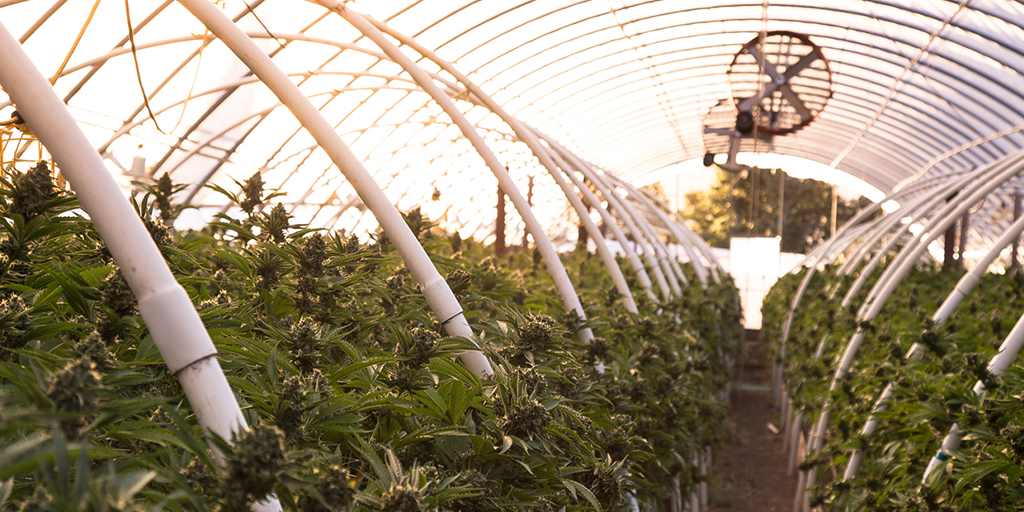Cannabis, explained
Why do products’ THC and CBD levels vary from batch to batch?
By SQDC.ca | Published on September 21st, 2022
Cannabis is a plant. And a little like a tomato, which can be more or less sweet depending on the harvest, the characteristics of a cannabis product – its THC and CBD levels, for example – can vary from batch to batch. The amount of water and sun that the plant receives and the humidity level of its growing environment are only a few of the factors that can influence the cannabinoid content of cannabis plants.

Cannabinoid content
The cannabinoid content is simply the amount of cannabinoids (mainly THC and CBD) found in the plants and, more specifically, the flowers (buds) of a given batch. You’ll find the information printed on the container, expressed in milligrams per gram (mg/g) or milligrams per unit (mg/unit).
By the way, Canada’s rules on the labelling of cannabis products were updated by Health Canada in January 2021. Here’s a useful guide for understanding the THC and CBD content units of cannabis products.
Why does the content vary from batch to batch?
It all starts with the plant’s genetics. Producers begin by choosing strains they the cross in order to obtain a plant with the best characteristics of each. And one of those characteristics is the stability of the cannabinoid content. Everything you need to know about the genetics of cannabis.
Several factors can influence a plant’s cannabinoid content and therefore its THC and CBD levels. One of the main ones is the stability of the growing environment. Maintaining constant environmental conditions (humidity level, heat, water, etc.) during the plant’s growth cycle is essential for obtaining the greatest possible consistency between batches. A tomato grown in a tropical climate won’t be the same as one grown in a continental climate.
Light is another important factor. The more there is, the more photosynthesis will take place, enabling the plant to seek out nutrients and grow. However, that’s not the only criterion that production teams have to take into account. Others, including the production method used, can have a big impact on the plant’s cannabinoid content.
Lastly, let’s note that the cannabinoid content can also be influenced by the final form the cannabis takes. For example, more variation in cannabinoid levels is seen in products meant to be inhaled (dried and ground flowers, pre-rolls, kief, hash…).
For some cannabis products like extracts and concentrates that can be ingested (oils, edibles, capsules, isolates…), the transformation and extraction processes can significantly reduce the variation in cannabinoid content. Depending on the methods used by the producers, a concentrate or extract is likely to have cannabinoid levels that are stable or vary a little from batch to batch.

Producers in solution mode
All the cannabis producers that do business with the SQDC are working – and investing in R&D – to stabilize the cannabinoid content of their products. In other words, the stability of the product profile from one batch to the next is a top goal. The work is far from done but real progress has been made toward developing products with similar THC and CBD levels from batch to batch.
One thing is certain: regardless of the growing method used or the environmental variations to which the cannabis plant is exposed, all products sold at the SQDC are subject to numerous laboratory analyses required by Health Canada.
A content range to guide you
Producers are required to provide the SQDC with a THC and CBD content range – 12% to 18%, for example – for each of their products. Basically, this is the historical THC range of all the product’s harvests, from the lowest to the highest THC content ever harvested. Note that the exact cannabinoid content for a given batch is always shown on the product label.
Factoid: since legalization, the content range that producers provide has shrunk. Why? Because producers are doing all they can to maintain consistent growing conditions and obtain plants that are similar irrespective of batch. For example, in 2018, the THC range for HEXO’s Hélios product was 13.5% to 23.5%, a potential difference of 10 percentage points! As of 2022, the product’s range is 17% to 20%.
In conclusion
When you notice different content levels for a product from one batch to the next, remember that cannabis is a plant and some variation in its characteristics is normal. Remember, too, that producers are working hard to improve batch-to-batch stability.
Whether you're a regular user or someone who buys the same products repeatedly, you should always take note of the cannabinoid content before using your product, as it may be different from the last batch.
Any questions? Talk to our advisors in store or via our chat service.
Autres sections qui pourraient vous intéresser
Types de
produits
La SQDC offre différents produits de cannabis de qualité et à moindre risque qui sont tous autorisés par Santé Canada.
Les effets
du cannabis
Relaxant, stimulant ou agissant sur l'humeur, le cannabis peut entraîner des effets agréables ou indésirables. Découvrez ce qui cause ces effets et ce qui influence leur intensité et leur durée.
Ressources
d'aide
Vous ou un de vos proches êtes aux prises avec des problèmes de consommation ? Plusieurs ressources d'aide existent. Consultez-les !








